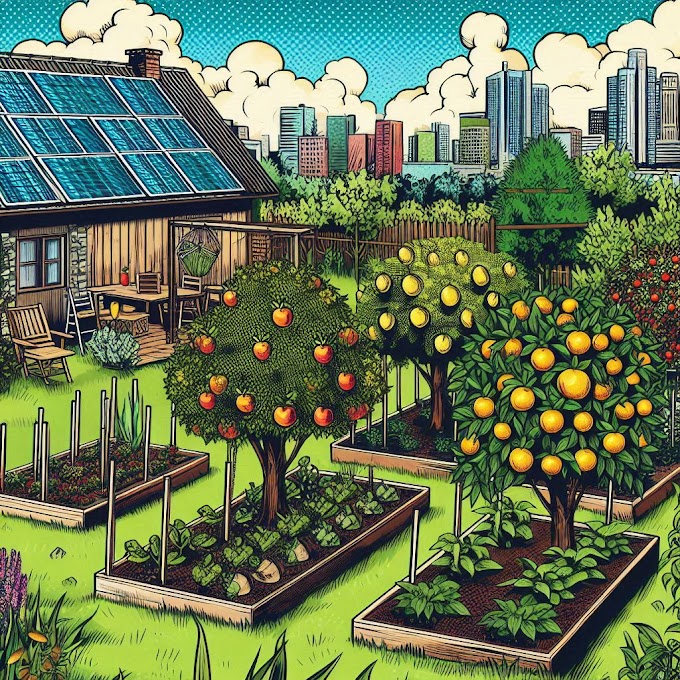Winter Squash: The Nutrient-Dense, Long-Lasting Crop for Your Survival Garden
Winter squash is a fantastic survival garden crop, providing a hearty, nutritious food source that can last for months when stored properly. With its rich flavor, versatility in the kitchen, and long shelf life, winter squash is an excellent choice for anyone looking to cultivate food that sustains them in tough times.
Why Grow Winter Squash?
High Nutritional Value: Winter squash is packed with essential vitamins like vitamin A, vitamin C, and B vitamins, as well as minerals like potassium and magnesium. It’s an excellent source of fiber, making it beneficial for digestive health.
Long Storage Life: When harvested and cured properly, winter squash can last for several months, making it an ideal food source for long-term storage.
Versatile Culinary Uses: Winter squash can be used in a wide variety of dishes, from soups and stews to baked goods and side dishes.
Good Yield: Winter squash vines are incredibly productive, making them a great addition to a survival garden that needs to produce a lot of food.
When to Plant Winter Squash
Warm-Season Crop: Winter squash requires warm soil to grow, so wait until the soil has warmed to at least 70°F (21°C) before planting.
Planting Timeframe: Winter squash typically takes between 90 and 120 days to reach maturity, depending on the variety. Plant seeds after the last frost date and ensure they have a long enough growing season to fully ripen.
Where to Grow Winter Squash
Location: Winter squash prefers full sun, so plant them in a location that receives at least 6-8 hours of direct sunlight per day.
Soil: Squash thrives in well-draining soil with a pH level between 6.0 and 7.5. Squash plants are heavy feeders, so amend your soil with compost or organic matter to improve fertility and structure.
How to Grow Winter Squash
1. Planting Seeds:
Plant squash seeds directly into the soil or start them indoors 2-4 weeks before the last frost. Space seeds 1 inch deep and 3-4 feet apart to give the plants enough room to spread. Winter squash plants need a lot of space to sprawl, so make sure to give them plenty of room.
2. Watering:
Keep the soil consistently moist but not waterlogged. Water deeply to encourage strong root development, but be careful not to overwater as squash plants do not like soggy soil.
3. Supporting Growth:
Squash plants can grow very large and spread across the garden. If you’re limited in space, consider growing squash vertically using trellises or supports. This can be especially useful for smaller varieties like butternut squash.
4. Fertilizing:
Squash plants are heavy feeders and will benefit from regular fertilization. Use a balanced organic fertilizer or compost to enrich the soil. Squash can also benefit from additional potassium during the growing season to support fruit production.
Benefits of Winter Squash in a Survival Garden
Nutrient-Dense: Winter squash is rich in vitamins A and C, both of which are crucial for immune health and overall well-being.
Long Shelf Life: After harvest, winter squash can be stored for several months in a cool, dry place. Varieties like acorn, butternut, and spaghetti squash can last until late winter or early spring if stored properly.
Versatility: From savory dishes to desserts, winter squash can be used in many different recipes. Its mild flavor and texture make it a great addition to soups, casseroles, roasted dishes, and even baked goods like muffins and pies.
Culinary Uses
Soups and Stews: Winter squash can be pureed into hearty soups and stews, often paired with spices like cinnamon, nutmeg, and ginger.
Roasting: Slice the squash in half, remove the seeds, and roast it with olive oil and your favorite seasonings for a delicious side dish.
Baking: Winter squash can be used in baking recipes, including pies, muffins, and breads.
Stuffed Squash: Hollow out the squash and fill it with grains, vegetables, or meat for a satisfying meal.
Squash Fries: Slice squash into thin strips, season, and bake for a healthy alternative to traditional fries.
Growing Tips
Mulch: Apply mulch around squash plants to retain moisture and prevent weed growth. Mulching also keeps the fruit off the soil, reducing the risk of rot.
Pollination: Winter squash is typically pollinated by bees, so it’s crucial to ensure your garden attracts pollinators. Without proper pollination, the fruits may not develop.
Avoid Overcrowding: Make sure to give squash plants plenty of room to spread, as overcrowding can lead to poor air circulation and increased susceptibility to disease.
Pest Control: Keep an eye on your squash plants for pests like squash bugs and cucumber beetles, which can damage the leaves and fruits. Use organic methods like neem oil or companion planting to deter pests.
Harvesting and Storing Winter Squash
1. Harvesting:
Winter squash is ready to harvest when the skin becomes hard and the color deepens. For varieties like butternut and acorn squash, the fruit will change from pale to a deeper orange or yellow. If you tap the skin, it should sound hollow.
Leave about 2-3 inches of stem attached to the squash when harvesting to improve its shelf life.
2. Curing:
After harvesting, allow the squash to cure in a warm, dry place for 10-14 days. This helps to harden the skin and improve storage life.
3. Storage:
Store winter squash in a cool, dry place with good air circulation. The ideal storage temperature is around 50-55°F (10-13°C). Squash should last for several months if stored properly.
Why Winter Squash Is a Must-Have in Your Survival Garden
Winter squash is an incredibly valuable crop in a survival garden due to its long shelf life, high nutritional value, and versatility in the kitchen.
It provides essential vitamins and minerals, while also offering a wide range of culinary options.
With its ability to store well and provide food for months after harvest, winter squash is a key crop for any long-term survival garden, ensuring that you have access to nutritious, filling meals throughout the winter months.












